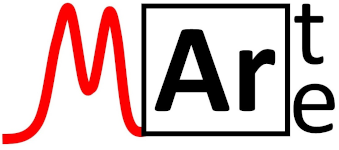
Teléfono: +34 876 553 510
Email: bruna.freire@ufabc.edu.br
Dirección: c/Pedro Cerbuna 12, Universidad de Zaragoza, Facultad de Ciencias, Departamento de Química Analítica – Zaragoza (España)
SOBRE MÍ
Bruna Moreira Freire obtuvo su licenciatura en Química en el Instituto Federal de São Paulo (Brasil) en 2016 y su Maestría en Ciencia y Tecnología/Química en la Universidad Federal del ABC (Brasil) en 2019. Actualmente es estudiante de doctorado en la Universidad Federal del ABC en el grupo de investigación EnvironmetalsBR, en cotutela con el grupo de investigación MARTE de la Universidad de Zaragoza (España). Su investigación se ha centrado en la determinación multielemental en muestras biológicas, alimentarias y medioambientales mediante ICP-MS. Otros temas de interés son el uso de la nanotecnología en agricultura y el desarrollo de métodos para dimensionar nanopartículas en tejidos vegetales por single particle ICP-MS (SP-ICP-MS).
PUBLICACIONES
2025
Freire, Bruna Moreira; Lange, Camila Neves; Augusto, Caroline Cristine; Onwuatu, Fernanda Ribeiro; Rodrigues, Gustavo Dell’Arno Principe; Pieretti, Joana Claudio; Seabra, Amedea Barozzi; Batista, Bruno Lemos
Foliar Application of SeNPs for Rice Biofortification: a Comparative Study with Selenite and Speciation Assessment Artículo de revista
En: ACS Agricultural Science & Technology, vol. 5, iss. 1, pp. 94-107, 2025.
@article{doi:10.1021/acsagscitech.4c00613,
title = {Foliar Application of SeNPs for Rice Biofortification: a Comparative Study with Selenite and Speciation Assessment},
author = {Bruna Moreira Freire and Camila Neves Lange and Caroline Cristine Augusto and Fernanda Ribeiro Onwuatu and Gustavo Dell’Arno Principe Rodrigues and Joana Claudio Pieretti and Amedea Barozzi Seabra and Bruno Lemos Batista},
url = {https://doi.org/10.1021/acsagscitech.4c00613},
doi = {10.1021/acsagscitech.4c00613},
year = {2025},
date = {2025-01-01},
urldate = {2024-12-16},
journal = {ACS Agricultural Science & Technology},
volume = {5},
issue = {1},
pages = {94-107},
abstract = {A significant portion of the global population lacks access to a balanced diet, leading to widespread micronutrient deficiencies. Selenium (Se) deficiency affects approximately 1 billion people worldwide, and agronomic biofortification of food crops using inorganic Se fertilizers or Se nanoparticles (SeNPs) has emerged as a potential solution. However, to ensure food safety, it is critical to assess whether nonbioavailable or toxic Se species are formed when SeNPs are introduced into plants. In this study, pot experiments with rice plants (Oryza sativa L.) were conducted to evaluate the effects of foliar applications of selenite (Se(IV)) and SeNPs on Se uptake, translocation, and speciation. Plant growth, chemical, and biochemical parameters were evaluated. Selenium accumulation and speciation were determined using inductively coupled plasma mass spectrometry (ICP-MS) and high-performance liquid chromatography coupled with ICP-MS (HPLC-ICP-MS). The results demonstrated that SeNP treatment did not adversely affect plant growth, grain yield, and oxidative stress or significantly increase the inorganic Se content in rice grains. From a nutritional perspective, grains biofortified with SeNPs had the potential to meet 100% of the recommended daily Se intake. Meanwhile, Se(IV) was more efficient for grain biofortification but increased the concentration of inorganic Se in rice grains by 141% compared to the control group. Regardless of the Se species applied, rice fertilization increased the proportion of selenomethionine while it reduced selenocysteine in grains. The treatment with SeNPs did not compromise the nutritional quality of rice grains but increased As content from 175 to 210 μg kg–1, which remains below the maximum allowable limit of 350 μg kg–1 for husked rice. The foliar application of SeNPs enables the production of Se-enriched rice with Se levels controlled within a safe range for human consumption and without significantly altering inorganic Se concentrations. This approach offers a viable strategy for addressing Se deficiency through biofortified rice.},
keywords = {},
pubstate = {published},
tppubtype = {article}
}
2024
Freire, Bruna Moreira; Rua-Ibarz, Ana; Nakadi, Flávio Venâncio; Bolea-Fernandez, Eduardo; Barriuso-Vargas, Juan J.; Lange, Camila Neves; Aramendía, Maite; Batista, Bruno Lemos; Resano, Martín
Tracing isotopically labeled selenium nanoparticles in plants via single-particle ICP-mass spectrometry Artículo de revista
En: Talanta, vol. 277, pp. 126417, 2024, ISSN: 0039-9140.
@article{FREIRE2024126417,
title = {Tracing isotopically labeled selenium nanoparticles in plants via single-particle ICP-mass spectrometry},
author = {Bruna Moreira Freire and Ana Rua-Ibarz and Flávio Venâncio Nakadi and Eduardo Bolea-Fernandez and Juan J. Barriuso-Vargas and Camila Neves Lange and Maite Aramendía and Bruno Lemos Batista and Martín Resano},
url = {https://www.sciencedirect.com/science/article/pii/S0039914024007963},
doi = {https://doi.org/10.1016/j.talanta.2024.126417},
issn = {0039-9140},
year = {2024},
date = {2024-01-01},
journal = {Talanta},
volume = {277},
pages = {126417},
abstract = {Abstract
Agronomic biofortification using selenium nanoparticles (SeNPs) shows potential for addressing selenium deficiency but further research on SeNPs-plants interaction is required before it can be effectively used to improve nutritional quality. In this work, single-particle inductively coupled plasma-mass spectrometry (SP-ICP-MS) was used for tracing isotopically labeled SeNPs (82SeNPs) in Oryza sativa L. tissues. For this purpose, SeNPs with natural isotopic abundance and 82SeNPs were synthesized by a chemical method. The NPs characterization by transmission electron microscopy (TEM) confirmed that enriched NPs maintained the basic properties of unlabeled NPs, showing spherical shape, monodispersity, and sizes in the nano-range (82.8 ± 6.6 nm and 73.2 ± 4.4 nm for SeNPs and 82SeNPs, respectively). The use of 82SeNPs resulted in an 11-fold enhancement in the detection power for ICP-MS analysis, accompanied by an improvement in the signal-to-background ratio and a reduction of the size limits of detection from 89.9 to 39.9 nm in SP-ICP-MS analysis. This enabled 82SeNPs to be tracked in O. sativa L. plants cultivated under foliar application of 82SeNPs. Tracing studies combining SP-ICP-MS and TEM-energy-dispersive X-ray spectroscopy data confirmed the uptake of intact 82SeNPs by rice leaves, with most NPs remaining in the leaves and very few particles translocated to shoots and roots. Translocation of Se from leaves to roots and shoots was found to be lower when applied as NPs compared to selenite application. From the size distributions, as obtained by SP-ICP-MS, it can be concluded that a fraction of the 82SeNPs remained within the same size range as that of the applied NP suspension, while other fraction underwent an agglomeration process in the leaves, as confirmed by TEM images. This illustrates the potential of SP-ICP-MS analysis of isotopically enriched 82SeNPs for tracing NPs in the presence of background elements within complex plant matrices, providing important information about the uptake, accumulation, and biotransformation of SeNPs in rice plants.},
keywords = {},
pubstate = {published},
tppubtype = {article}
}
Agronomic biofortification using selenium nanoparticles (SeNPs) shows potential for addressing selenium deficiency but further research on SeNPs-plants interaction is required before it can be effectively used to improve nutritional quality. In this work, single-particle inductively coupled plasma-mass spectrometry (SP-ICP-MS) was used for tracing isotopically labeled SeNPs (82SeNPs) in Oryza sativa L. tissues. For this purpose, SeNPs with natural isotopic abundance and 82SeNPs were synthesized by a chemical method. The NPs characterization by transmission electron microscopy (TEM) confirmed that enriched NPs maintained the basic properties of unlabeled NPs, showing spherical shape, monodispersity, and sizes in the nano-range (82.8 ± 6.6 nm and 73.2 ± 4.4 nm for SeNPs and 82SeNPs, respectively). The use of 82SeNPs resulted in an 11-fold enhancement in the detection power for ICP-MS analysis, accompanied by an improvement in the signal-to-background ratio and a reduction of the size limits of detection from 89.9 to 39.9 nm in SP-ICP-MS analysis. This enabled 82SeNPs to be tracked in O. sativa L. plants cultivated under foliar application of 82SeNPs. Tracing studies combining SP-ICP-MS and TEM-energy-dispersive X-ray spectroscopy data confirmed the uptake of intact 82SeNPs by rice leaves, with most NPs remaining in the leaves and very few particles translocated to shoots and roots. Translocation of Se from leaves to roots and shoots was found to be lower when applied as NPs compared to selenite application. From the size distributions, as obtained by SP-ICP-MS, it can be concluded that a fraction of the 82SeNPs remained within the same size range as that of the applied NP suspension, while other fraction underwent an agglomeration process in the leaves, as confirmed by TEM images. This illustrates the potential of SP-ICP-MS analysis of isotopically enriched 82SeNPs for tracing NPs in the presence of background elements within complex plant matrices, providing important information about the uptake, accumulation, and biotransformation of SeNPs in rice plants.
Freire, Bruna Moreira; Lange, Camila Neves; Cavalcanti, Yasmin Tavares; Seabra, Amedea Barozzi; Batista, Bruno Lemos
Ionomic Profile of Rice Seedlings after Foliar Application of Selenium Nanoparticles Artículo de revista
En: Toxics, vol. 12, no 7, 2024, ISSN: 2305-6304.
@article{toxics12070482,
title = {Ionomic Profile of Rice Seedlings after Foliar Application of Selenium Nanoparticles},
author = {Bruna Moreira Freire and Camila Neves Lange and Yasmin Tavares Cavalcanti and Amedea Barozzi Seabra and Bruno Lemos Batista},
url = {https://www.mdpi.com/2305-6304/12/7/482},
doi = {10.3390/toxics12070482},
issn = {2305-6304},
year = {2024},
date = {2024-01-01},
journal = {Toxics},
volume = {12},
number = {7},
abstract = {Nanotechnology has been increasingly used in plant sciences, with engineered nanoparticles showing promising results as fertilizers or pesticides. The present study compared the effects in the foliar application of Se nanoparticles (SeNPs) or sodium selenite-Se(IV) on rice seedlings. The degree of plant growth, photosynthetic pigment content, and concentrations of Se, Na, Mg, K, Ca, Mn, Co, Cu, Zn, As, Cd, and Pb were evaluated. The results showed that the application of SeNPs at high concentrations (5 mg L−1), as well as the application of Se(IV), inhibited plant growth and increased the root concentrations of As and Pb. The application of SeNPs at 0.5 mg L−1 significantly increased Se accumulation in the aerial part from 0.161 ± 0.028 mg kg−1 to 0.836 ± 0.097 mg kg−1 without influencing physiological, chemical, or biochemical parameters. When applied to leaves, SeNPs tended to remain in the aerial part, while the application of Se(IV) caused a higher Se translocation from the shoots to the roots. This study provides useful information concerning the uptake, accumulation, and translocation of different Se formulations in rice seedlings and their effect on plant ionomic profiles, thus showing that the foliar application of SeNPs at low concentrations can be an effective and safe alternative for rice biofortification.},
keywords = {},
pubstate = {published},
tppubtype = {article}
}

